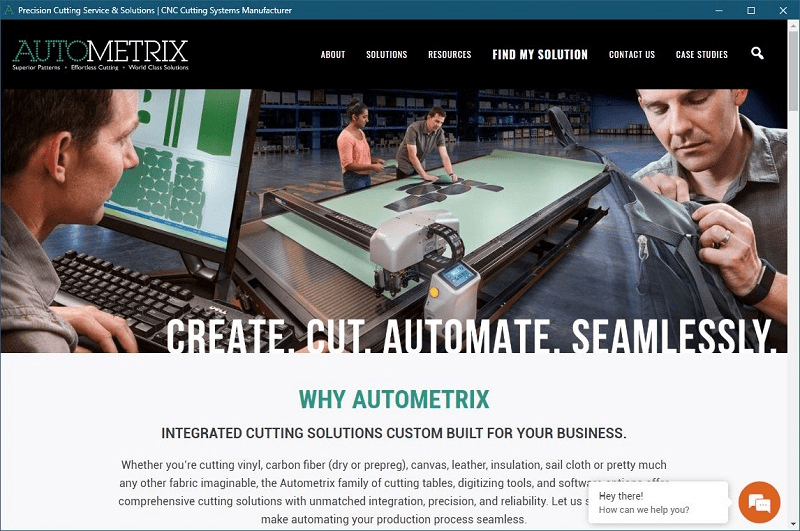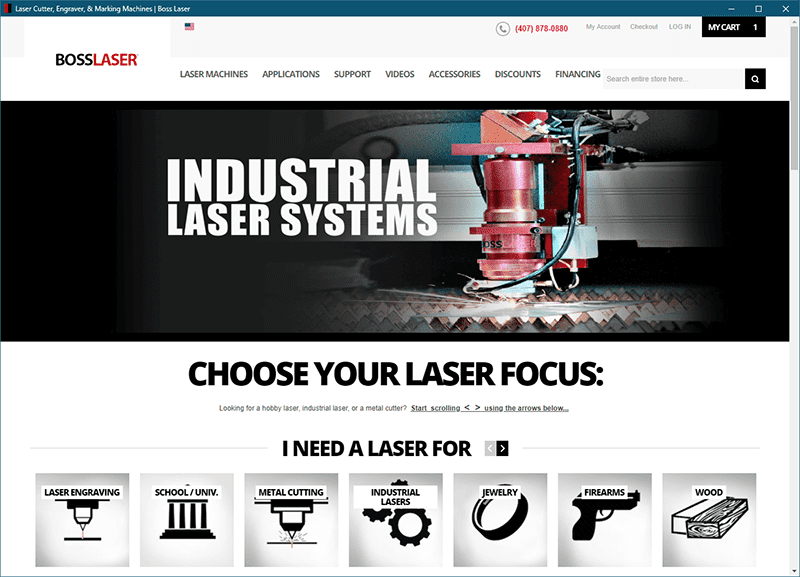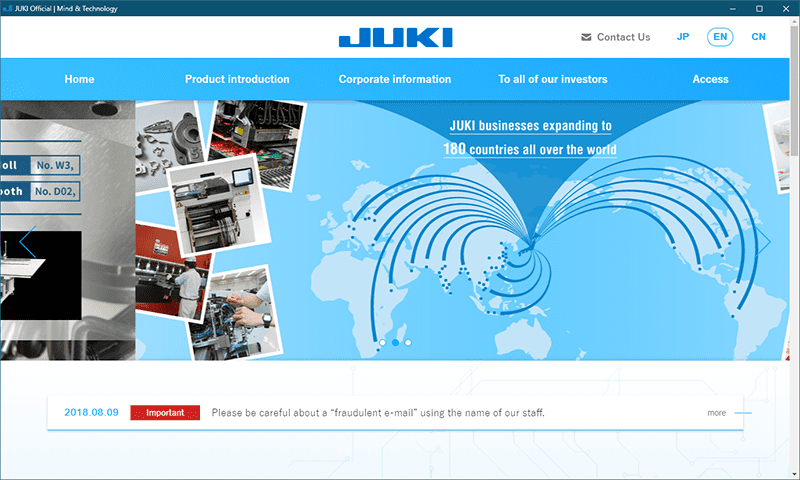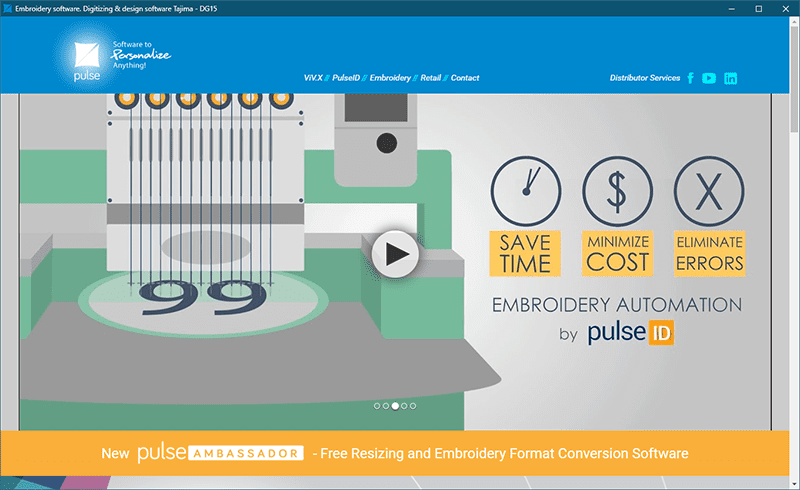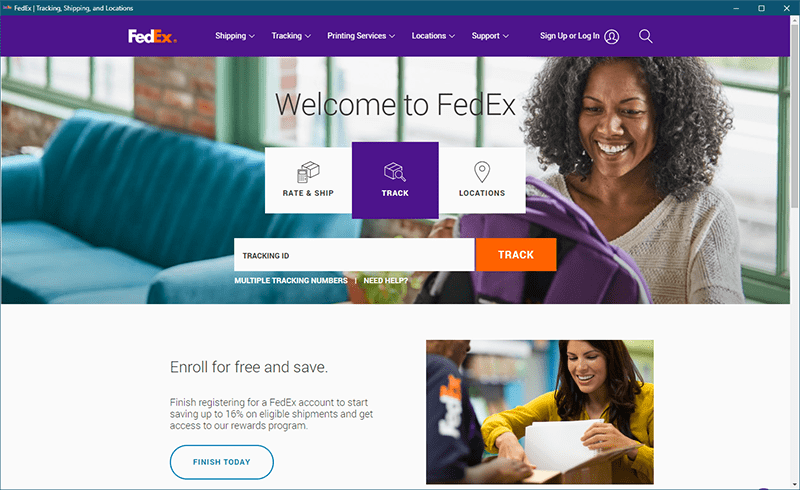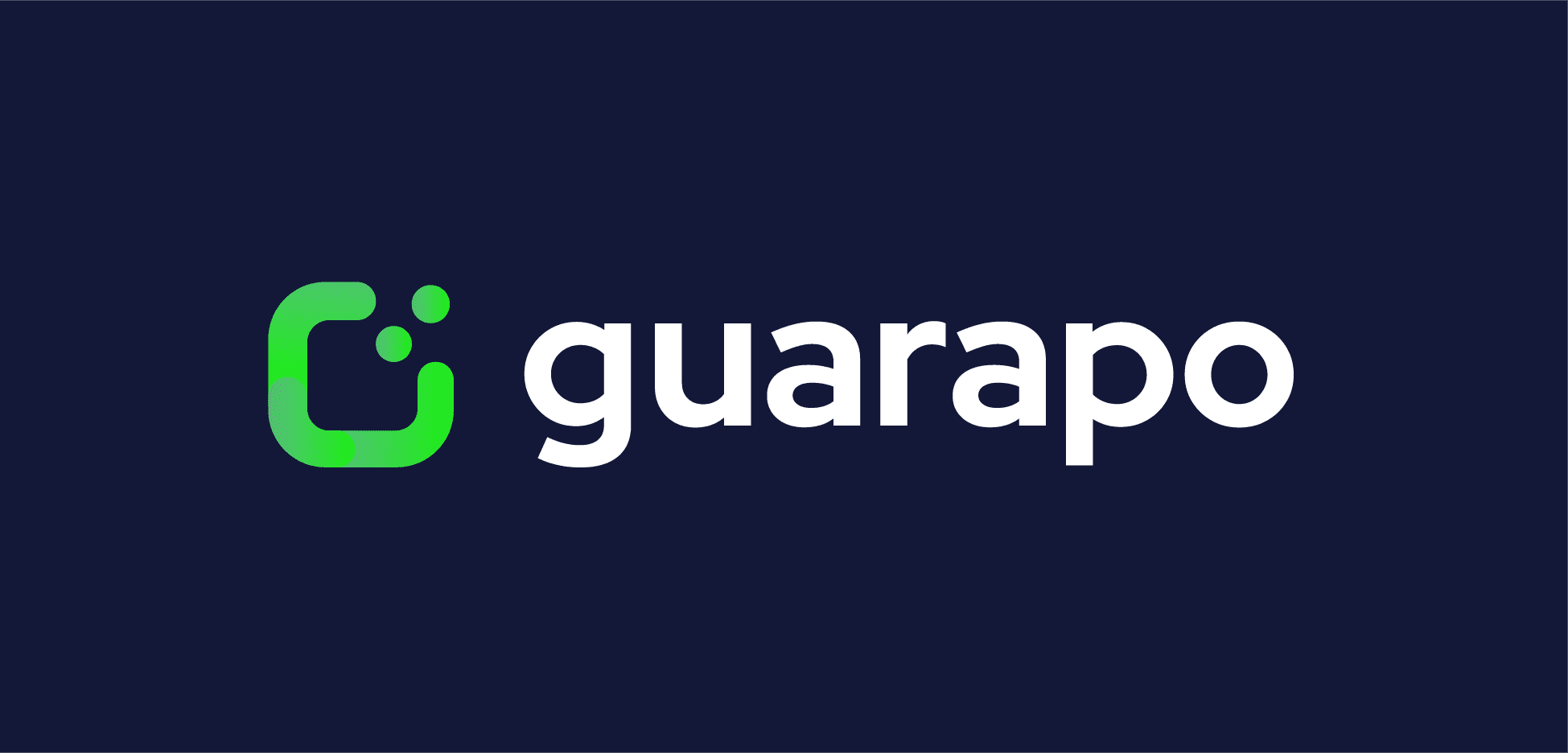AutoMetrix
Computerized pattern making and nesting directly connected to an automated cutting table.Our deployment of AutoMetrix hardware and software offers major advantages in four areas of operation: ...
-
Pattern Digitization
The software offers multiple methods of data input. Once input an array of abilities to organize, mark, notate and combine pattern elements are available. One file or project contains all components to cut clearly marked by fabric. Marks necessary for sewing operations, as well as even written notes if desired, can be transferred to the fabric to be cut.
-
Pattern Nesting
This aspect of their software allows the processing power of the computer to determine the most efficient nesting of the pattern elements selected. Fabric width and cut-able table length are the limiting factors – the computer recognizes the space and calculates the least-waste layout of the irregular pattern shapes. But it gets even better!
-
Hide Shot
An additional software/hardware element utilizes a strategically mounted and calibrated 35mm camera tied to an enhanced nesting software ability. The very irregular leather hide is laid out on the table under the camera. The camera image is networked to the software where areas of the leather not desired (brands, holes, distortions, etc.) are marked. Then again the computer processes the usable hide and nests the selected pattern – with an amazing reduction of waste – preceded by an amazing savings in time and labor versus manual pattern nesting and marking.
-
Cutting Table
All this truly wonderful stuff plays out with incredible speed, consistency and accuracy on the AutoMetrix cutting table. Fabric is laid out, and depending on fabric characteristics, a paper underly or plastic overlay (or nothing at all) may be added. A vacuum is drawn under the table anchoring the fabric and the computerized marking and cutting operations begin. A traversing boom with floating head (X / Y axis) travels the table length executing cuts and marks as the pattern file commands. If you're into computerized mechanics, this is heady stuff - even if you're not, it's just amazing to watch!
But we're not done with these folks yet. To us, the beauty of this outfit is their vertical integration. They write the software, they build the equipment – an unusual arrangement that allows them a depth of knowledge and support rarely seen elsewhere. To boot – they're just up the highway from us – doesn't get much better.
Boss Laser
From a vector file to a guided laser beam to precise heat branding of leather with amazing detail.
Laser engraving or etching of leather is by no means yet a science, or even widely done. In our research we found considerable diverse and conflicting sentiment. We had played around with this on other company's equipment but as our leather work grew, we became compelled to dive in, purchase a machine and overcome the obstacles.
The BossLaser is an amazing piece of equipment. It's abilities in material handling - pass-through architecture – and variables in terms of what is to be lasered are at once their challenge and their bright spot. For us, it's all about leathers and generally 'smaller' items of work, and while our approach is narrow, the equipment certainly has the capabilities. As with embroidery, we do not adorn 'other people's goods' - we're not an embroidery or laser shop. This allows a narrow but deep focus.
This is an ongoing effort for us – and we know manufacturers are continuing laser equipment development for leathers and textiles. To date we've found amazing results ON SOME LEATHERS, but certainly not all. Much of this goes to the particular leather and the tanning process it underwent. Truly unique - on some leathers we can 'mask' the etch area; burn through mask and etch the leather; and then hand dye the etched area. The mask becomes a stencil yielding an extremely accurate impregnation and a stunning visual appeal. That said, 'some leathers' becomes a fewer number and the dye colors are limited.
Juki
Quality commercial sewing machines, from simple single needle to computerized pattern stitching.
In 2018 Juki celebrated their 80th birthday. They talk about innovative equipment that delivers 'peace of mind'.Juki commercial sewing machines are the work horses of our plant. We rely on their durability, their consistency, our ability to maintain them, and the quality they produce in the hands of expert crafts people.
We're proud to own them, use them and support their continued development.
Pulse
DGML digitizing software network connected to multiple embroidery machines. Fast, simple, efficient.
Almost two decades ago we 'cut our teeth' in embroidery using this digitizing software. Through very little training, but countless hours of trial and error, we learned this software and how to expertly bring your brand art to fabrics far tougher than most.
Sewing on ballistic nylon is a far cry from sewing on your pique polo shirt – this software provides the tools for us to 'tweak' stitch-segment settings to accommodate strand size or weave pattern and produce stunning results.
While we retain digitizing capabilities in house, today we outsource the process in most cases. We insist that our digitizer use this software and deliver their result in DGML's editable format. Every stitch file passes through our software and is checked, corrected (if necessary) and colorized prior to being networked to an embroidery machine.
Tajima
Arguably the best commercial embroidery machines in the world – it's no longer an argument here.
We love single head machines. Having owned multiple-head machines, we're now quite pleased running five single-head machines. We approach this process from a different perspective than a 'normal' embroidery shop. Generally, we do not embroider anything other than what is on the backlog and in the process of production.
Assuming volume, certainly multiple head machines are more cost effective than single head machines. But multiple head machines do have drawbacks; if volume is inconsistent and the 'spread' of art to be embroidered is quite wide, single head machines gain significant traction.
We also believe that single head machines can run consistently faster while producing a higher quality product. A mechanical issue on a single head stops one head; on a multiple head machine it at least temporarily stops all heads while the errant head is idled and repaired, and if the issue is major, all heads must be idled.
Visit the plant – see for yourself our processes, equipment and the constant stretch to higher quality products.
FedEx
Superior logistics and service; from shipping to internal software development/integration.
If you are not familiar with the history and culture behind FedEx, we encourage you to take a moment. We made the switch over 18 years ago and not once, in even the worst circumstance, have we regretted or lamented that decision. It's about SERVICE.
We were very fortunate to have been chosen as a 'pilot company' testing enhanced FDX services;
- We piloted their Express Saver 3-Day Service. When the 'normal' was overnight (at WHAT cost?!?!) or a week (I can't wait that long) - 3 day service was truly ground breaking. At once we could provide our east coast customers with a product in half the time at close to the old cost. Their service allowed us to become extraordinary.
- We piloted their 'Café' computerized shipping software. While it's no longer called 'Café, this software centralized shipping procedures as FDX absorbed the RPS ground delivery system and integrated ground and express shipping services. We continue to use the latest 'Café' system to this day.
FedEx goes a step beyond. A customer shouldn't have to ask – the customer should be asked.
Guarapo Labs
From our perspective, the overarching challenge in developing our software was the necessity to convey the business logic that should drive the coding, design, and desired result.
Loss of that logic path too often results in becoming a slave of the 'the system' versus the system being a versatile asset that drives your objective.
After more than a decade; the first part of which is trial and error - mostly error the second part finally seeing some meat and progress but no finish line; we finally landed right here - where we should be.
Why? Very simply put - these folks work harder; at understanding your logic, in detail, and turning that logic to code and design that works to serve your product and service goals. These folks follow a tenant we've adhered to for over 40 years - they work with you, not at you.

